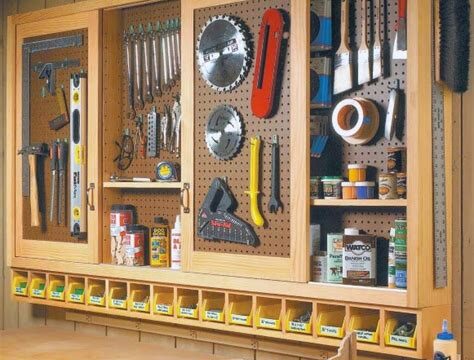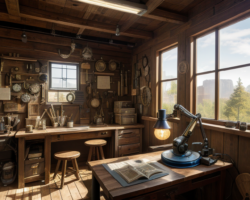Introduction: As a homeowner or DIY enthusiast, having the right tools at your disposal is essential for any project. Whether you’re a novice or seasoned DIYer, equipping yourself with a collection of power tools, hand tools, cutting tools, measuring tools, and fastening tools can make a world of difference. In this blog post, we will explore the must-have tools for every DIYer’s toolkit, along with handy organization and storage solutions to keep your workspace clutter-free. We’ll also discuss effective safety equipment and helpful specialty tools that can take your DIY projects to the next level. Let’s dive in and discover the ultimate toolbox for all your home improvement needs.
Essential Power Tools
When it comes to tackling DIY projects or making repairs around the house, having the right tools is essential. One category of tools that every handyman or homeowner should have in their arsenal is essential power tools. These tools not only make the job easier and more efficient, but they also provide the necessary power to complete tasks that would be otherwise impossible by hand.
One of the most commonly used power tools is the power drill. This versatile tool can be used for drilling holes, driving screws, and even sanding surfaces with the right attachments. With adjustable speed settings, a power drill can handle a wide range of materials, from wood to metal. Whether you’re installing shelves, assembling furniture, or building a deck, a power drill is a must-have tool.
Another essential power tool to have in your toolbox is a circular saw. This handheld saw is perfect for making straight cuts in a variety of materials, such as wood, plastic, and metal. From cutting lumber for a DIY project to trimming tree branches, a circular saw is a powerful and reliable tool. Make sure to use appropriate safety precautions, such as wearing protective eyewear and using a saw guide, when operating a circular saw.
In addition to the power drill and circular saw, a jigsaw is another essential tool for any homeowner or DIY enthusiast. This handheld saw is designed for making curved or intricate cuts in materials like wood, plastic, or metal. Whether you’re cutting out a hole for a sink in a countertop or creating a custom shape for a craft project, a jigsaw provides precision and control. With the right blade, it can also be used for straight cuts.
When it comes to essential power tools, these examples are just the tip of the iceberg. Other tools like a power sander, a power router, and a power nailer can also make your DIY projects easier and more efficient. By investing in these power tools, you’ll be equipped to handle a wide range of tasks and projects around your home. Whether you’re a seasoned DIYer or just starting out, having these essential power tools in your toolbox will save you time, effort, and frustration in the long run.
Must-Have Hand Tools
When it comes to tackling DIY projects or even simple household repairs, having the right hand tools is crucial. These tools are designed to help you perform various tasks with ease and efficiency. Whether you’re a beginner or an experienced DIY enthusiast, there are a few must-have hand tools that should be part of your toolbox. In this blog post, we will explore some of the essential hand tools that every homeowner or DIYer should invest in.
1. Screwdriver Set: One of the most basic and essential hand tools that should be in everyone’s toolbox is a screwdriver set. From tightening loose screws to assembling furniture, a screwdriver is a versatile tool that can handle a wide range of tasks. Make sure to have both flathead and Phillips head screwdrivers in different sizes to accommodate various screw types and sizes.
2. Claw Hammer: A claw hammer is another must-have hand tool that is commonly used for driving nails and removing them. It consists of a metal head with a flat face for striking, and a V-shaped claw on the opposite side for pulling nails out of surfaces. Whether you’re hanging a picture frame or building a wooden structure, a claw hammer is an essential tool that provides the necessary force for driving nails.
3. Adjustable Wrench: An adjustable wrench, also known as a crescent wrench, is a versatile tool that can be adjusted to fit different nut and bolt sizes. This tool comes in handy when you need to loosen or tighten nuts and bolts, making it an essential tool for plumbing repairs, automotive work, and other tasks that require fastening or loosening nuts and bolts.
4. Utility Knife: A utility knife, also known as a box cutter or a snap-off knife, is a versatile cutting tool that can be used for a wide range of tasks. From opening packages and cutting through cardboard to trimming materials and scoring surfaces, a utility knife is a must-have tool for any DIYer. Look for a utility knife with a retractable blade for safety and convenience.
5. Tape Measure: Accurate measurements are crucial when it comes to home improvement projects. A tape measure allows you to measure distances, dimensions, and lengths precisely. Whether you’re hanging curtains or building furniture, a tape measure is an essential tool that ensures your projects are accurate and well-fitted.
Having these must-have hand tools in your toolbox will not only make your DIY projects and household repairs easier but also help you save time and money in the long run. With these tools by your side, you’ll have the confidence to tackle various tasks with ease and efficiency.
Versatile Cutting Tools
When it comes to tackling various projects around the house or in the workshop, having a set of versatile cutting tools is essential. These tools not only help you achieve precise and accurate cuts, but they also enhance your efficiency and productivity. Whether you are a professional contractor or a DIY enthusiast, there are a few cutting tools that you should definitely have in your toolbox.
1. Miter Saw: A miter saw is a versatile power tool that allows you to make precise cuts at different angles. Whether you need to make straight cuts, bevel cuts, or miter cuts, this tool is perfect for any woodworking project. It is equipped with a rotating blade that effortlessly slices through various materials, including wood, plywood, PVC, and even metal.
2. Circular Saw: Another must-have cutting tool is a circular saw. This handheld power tool is incredibly versatile and can be used for a wide range of cutting tasks. Whether you need to make rip cuts, crosscuts, or plunge cuts, a circular saw is ideal for cutting through different materials, such as wood, plywood, laminate, and even concrete. With the right blade, you can achieve clean and precise cuts effortlessly.
3. Utility Knife: While power tools are essential, a trusty utility knife is also a versatile cutting tool that you should have in your toolbox. This handheld tool is perfect for tasks that require precision and detail. From cutting ropes and opening packages to scoring drywall and trimming materials, a utility knife is a convenient and handy tool to have around. Make sure to always keep a spare blade to ensure sharp and clean cuts.
| Tool | Uses |
|---|---|
| Miter Saw | Perfect for making precise cuts at different angles, suitable for woodworking projects. |
| Circular Saw | Ideal for a wide range of cutting tasks, including rip cuts, crosscuts, and plunge cuts. |
| Utility Knife | Useful for precision tasks like cutting ropes, opening packages, scoring drywall, and trimming materials. |
Having a collection of versatile cutting tools in your arsenal allows you to take on various projects with confidence and ease. These tools enable you to achieve accurate cuts, saving you time and effort. Whether you are working on woodworking projects, home renovations, or simple DIY tasks, investing in these cutting tools will undoubtedly enhance your capabilities and help you achieve professional-looking results.
Convenient Measuring Tools
When it comes to completing any project, having convenient measuring tools is essential. These tools not only help us accurately measure and mark dimensions, but they also save us time and effort. Whether you are a professional carpenter, a DIY enthusiast, or simply someone who enjoys working on home projects, having the right measuring tools can make a world of difference. In this blog post, we will explore some of the must-have measuring tools that every handy person should have in their toolkit.
One of the most common measuring tools that you will find in any toolbox is the tape measure. This versatile tool allows you to measure both length and width, making it perfect for a wide range of projects. Whether you are measuring the dimensions of a room, determining the size of a piece of furniture, or calculating the length of a wall, a tape measure is a handy tool to have by your side.
In addition to a tape measure, another convenient tool to have is a ruler. While a tape measure is great for larger measurements, a ruler is perfect for smaller, more precise measurements. With a ruler, you can easily measure items with straight edges, such as lumber, fabrics, or even paper. It provides accuracy and allows you to make precise cuts or markings.
Lastly, a level is another essential measuring tool that should not be overlooked. A level is used to ensure that surfaces, such as shelves or wall hangings, are perfectly straight. It helps eliminate any guesswork and ensures that your projects are level and balanced. Whether you are hanging picture frames or installing shelves, a level is your go-to tool for achieving a professional-looking result.
Overall, having convenient measuring tools in your toolbox is crucial for any project. A tape measure, ruler, and level are just a few examples of the essential measuring tools that every handy person should own. Investing in quality measuring tools will not only make your projects more accurate but also save you time and frustration. So, make sure to equip yourself with these must-have measuring tools and take your projects to the next level!
- Tape measure
- Ruler
- Level
| Tool | Function |
|---|---|
| Tape measure | Measures length and width |
| Ruler | Measures smaller, precise measurements |
| Level | Ensures surfaces are straight and level |
Efficient Fastening Tools
When it comes to working on various projects, having the right tools is crucial. Whether you are a DIY enthusiast or a professional tradesperson, efficient fastening tools are a must-have in your toolbox. These tools not only make your work easier and faster but also ensure the stability and durability of your projects. In this blog post, we will discuss some essential fastening tools that every handyman should consider having in their toolkit.
First on the list of efficient fastening tools is the cordless drill. This versatile tool allows you to drill holes and drive screws effortlessly. With its adjustable speed settings and ergonomic design, a cordless drill provides the much-needed convenience and efficiency for any fastening job. Whether you are mounting shelves or assembling furniture, a cordless drill is a go-to tool for all your fastening needs.
Another essential tool in the fastening category is the nail gun. This powerful tool is designed to drive nails quickly and accurately into various types of materials. From framing walls to attaching trim, a nail gun can save you significant time and effort compared to traditional hammering. With different sizes and types of nail guns available, you can choose the one that best suits your specific needs and projects.
Screwdrivers are one of the most commonly used fastening tools in any toolbox. They come in different types, including flathead and Phillips screwdrivers. These versatile tools are used for tightening or loosening screws and are essential for a wide range of applications. Whether you are assembling furniture, repairing electronics, or working on household projects, having a set of high-quality screwdrivers is a must.
In addition to the above-mentioned tools, impact drivers are becoming increasingly popular in the world of fastening. An impact driver delivers a strong rotational force, making it ideal for driving screws and bolts into hard materials. With their high torque and percussion mechanism, impact drivers provide efficient and effortless fastening, even in tight spaces.
Finally, staplers and nailers are essential fastening tools for upholstery work, carpentry, and other specialized applications. These tools are designed to drive staples or nails into materials such as fabric, wood, or plastic. With their precision and power, staplers and nailers ensure secure and professional-looking fastenings.
In conclusion, efficient fastening tools play a vital role in any DIY or professional project. The right tools not only save time and effort but also ensure the stability and durability of your work. From cordless drills and nail guns to screwdrivers and impact drivers, having a well-equipped toolbox is essential for any tradesperson. So, invest in these versatile and efficient fastening tools, and you’ll be well-equipped to tackle any fastening job that comes your way.
Handy Organization and Storage Solutions
When it comes to working on projects, having an organized and efficient workspace can make all the difference. This is where handy organization and storage solutions come in. These tools and systems help to keep your tools and materials in order, making it easier to find what you need and to keep your workspace clutter-free.
One popular solution for organizing tools is a tool chest or toolbox. These come in various sizes and styles, allowing you to choose one that suits your needs. A tool chest typically has multiple drawers and compartments, making it easy to sort and store different types of tools. With a tool chest, you can keep your tools neatly organized and easily accessible, ensuring that you never waste time searching for a specific tool again.
Another handy storage solution is a pegboard or wall-mounted tool rack. These provide a convenient way to hang and display your tools, keeping them within reach and visible at all times. With a pegboard, you can easily customize the arrangement of your tools by adding or rearranging hooks as needed. This allows for efficient use of wall space and helps to maximize your storage capacity.
- Drawer dividers: If you have a toolbox or cabinet with drawers, using dividers can help keep your tools organized. Dividers create separate compartments within a drawer, allowing you to separate different types of tools or materials. This not only helps with organization but also prevents tools from getting damaged or tangled with one another.
- Labeling system: To further enhance organization, consider implementing a labeling system. This can be as simple as using a label maker or adhesive labels to mark the contents of drawers, cabinets, or storage bins. Clear labeling makes it easy to identify and locate tools or materials, saving you time and frustration.
Lastly, don’t forget about storage solutions for small parts and accessories. Small storage bins or compartmentalized organizers are excellent for keeping screws, nails, and other small items neatly sorted and easily accessible. These can be placed in drawers, attached to walls, or stacked on shelves, depending on your preference and available space.
| Storage Solution | Key Features |
|---|---|
| Tool chests and toolboxes | – Multiple drawers – Various sizes available – Easy to find and access tools |
| Pegboards and tool racks | – Wall-mounted for space-saving – Customizable arrangement of tools – Keeps tools visible and within reach |
| Drawer dividers | – Separates tools within drawers – Prevents tool damage or tangling – Enhances organization |
| Labeling system | – Easily identifies contents of storage – Saves time in locating tools/materials |
| Small storage bins/organizers | – Keeps small parts and accessories sorted – Can be placed in drawers, on walls, or shelves |
In conclusion, having efficient organization and storage solutions in your workspace is essential for productivity and maintaining a clutter-free environment. From tool chests and pegboards to drawer dividers and labeling systems, there are various options available to suit your needs. By investing in these handy tools, you can create a well-organized workspace that allows you to work efficiently and effectively.
Effective Safety Equipment
Effective Safety Equipment
When it comes to working with tools and performing various tasks, safety should always be a top priority. It is crucial to have the right safety equipment to ensure the well-being of yourself and those around you. Whether you are a professional or a DIY enthusiast, having effective safety equipment is essential. In this blog post, we will explore some of the must-have safety tools that can help protect you from potential hazards and accidents.
1. Safety Glasses: One of the most important safety tools that should be part of every toolbox is a pair of safety glasses. These glasses are designed to protect your eyes from flying debris, dust, and other hazardous particles. Whether you are using power tools, doing woodworking, or working with chemicals, safety glasses are a must. They provide a clear line of sight while creating a barrier between your eyes and potential dangers.
2. Ear Protection: Working with power tools or in a noisy environment can lead to hearing damage if proper precautions are not taken. That’s why ear protection is crucial. There are various types of ear protection available, such as earplugs and earmuffs. They help reduce the noise level and prevent it from causing irreversible damage to your ears. Whether you are using a chainsaw, operating a heavy machinery, or working in a construction site, it is essential to wear ear protection.
3. Respirator Masks: Breathing in harmful particles, dust, or toxic fumes can have serious health implications. That’s where a good quality respirator mask comes in handy. It filters out the air you breathe, removing harmful substances and ensuring you have clean air. Whether you are painting, applying chemicals, or working with materials that produce harmful fumes, a respirator mask is a must for your safety.
4. Safety Gloves: Working with tools can be tough on your hands, and they are at risk of cuts, burns, or other injuries. That’s why investing in a pair of safety gloves is a great idea. Safety gloves provide protection against punctures, cuts, and abrasions. They also offer a good grip, making it easier to handle tools and reducing the chances of accidents. Depending on your needs, you can choose from a wide range of safety gloves, such as cut-resistant gloves, heat-resistant gloves, or chemical-resistant gloves.
5. Hard Hats: If you are working in a construction site or any other area where there is a risk of falling objects, wearing a hard hat is crucial. A hard hat protects your head from impact and provides resistance to penetration. It is designed to absorb and distribute the force of a blow, reducing the chances of a serious head injury. Always wear a hard hat when working in hazardous environments to ensure maximum safety.
In conclusion, having effective safety equipment is essential for anyone working with tools or in potentially hazardous environments. Investing in safety tools such as safety glasses, ear protection, respirator masks, safety gloves, and hard hats can significantly reduce the risk of accidents and protect your well-being. Remember, safety should always be a priority, and being equipped with the right safety equipment is a crucial step towards ensuring a safe working environment.
Helpful Specialty Tools
Specialty tools are a category of tools that are designed for specific tasks or jobs. These tools are not always essential or commonly used, but they can be incredibly helpful when you need them. Whether you are a professional tradesperson or a DIY enthusiast, having a collection of helpful specialty tools can save you time, effort, and frustration in various projects.
One of the most common specialty tools is the pipe wrench. This tool is specifically designed for gripping and turning pipes, making it essential for plumbers and those working with plumbing systems. The adjustable jaws of the pipe wrench provide a strong grip, allowing you to easily loosen or tighten pipe fittings. Without a pipe wrench, working with pipes becomes much more challenging and time-consuming.
Another helpful specialty tool is the power drill. While power drills are not necessarily specialized to a single task, they offer versatility and efficiency that regular hand drills do not. Power drills are equipped with motorized rotating drill bits that make drilling holes and driving screws much easier. With adjustable speed settings, reverse options, and various drill bit attachments, power drills can tackle a wide range of tasks in woodworking, construction, and home improvement projects.
- Pipe wrench: Essential for working with pipes and plumbing systems.
- Power drill: Offers versatility and efficiency in drilling and screw driving tasks.
| Specialty Tool | Common Use |
|---|---|
| Tile cutter | Cutting and shaping ceramic, porcelain, or stone tiles. |
| Soldering iron | Melting and joining metals together. |
| Nail punch | Driving nails below the surface of the wood. |
Other examples of helpful specialty tools include the tile cutter, soldering iron, and nail punch. A tile cutter is specifically designed for cutting and shaping ceramic, porcelain, or stone tiles, making it an essential tool for any tiling job. A soldering iron, on the other hand, is used for melting and joining metals together. It is commonly used in electrical work and plumbing projects. Lastly, a nail punch is a tool used for driving nails below the surface of the wood, ensuring a clean and professional finish.
While specialty tools may not be used on a daily basis, they can significantly improve the efficiency and quality of your work in specific tasks. By having a collection of helpful specialty tools in your toolbox, you will be well-prepared to handle any specialized projects that come your way.
Frequently Asked Questions
What are some essential power tools?
Some essential power tools include a cordless drill, circular saw, jigsaw, and impact driver.
What are must-have hand tools?
Must-have hand tools include a hammer, screwdriver set, adjustable wrench, and pliers.
What are some versatile cutting tools?
Some versatile cutting tools include a utility knife, hacksaw, reciprocating saw, and angle grinder.
What are some convenient measuring tools?
Some convenient measuring tools include a tape measure, level, combination square, and laser measure.
What are some efficient fastening tools?
Some efficient fastening tools include a cordless screwdriver, staple gun, nail gun, and impact wrench.
What are some handy organization and storage solutions?
Some handy organization and storage solutions include toolboxes, tool chests, pegboards, and wall-mounted racks.
What are some effective safety equipment?
Some effective safety equipment includes safety glasses, gloves, ear protection, and dust masks.
What are some helpful specialty tools?
Some helpful specialty tools include a pipe wrench, torque wrench, socket set, and wire stripper.





